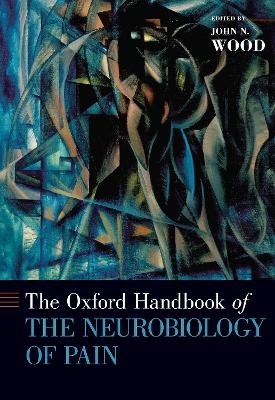
The Oxford Handbook of the Neurobiology of Pain
Oxford University Press Inc (Verlag)
978-0-19-086050-9 (ISBN)
The present volume covers all aspects of the topic, from a history of pain through invertebrate model systems to the human genetics of pain and functional imaging. Chapters include the role of ion channels, the opioid system, the immune and sympathetic systems, as well as the mechanisms that transform acute to chronic pain. Migraine and the interplay between sleep and pain are also discussed. New technology in the form of transgenic animals, chemogenetics, optogenetics, and proteomic analyses are providing significant advances in our research and are covered as well. Demystifying pain through an understanding of its fundamental biology, as outlined in this volume, is the most direct route to ameliorating this vast human problem.
John Wood completed a PhD at Warwick University and trained as a virologist with Luc Montagnier in Paris. After 12 years in industry, he began his career in pain research at University College London. He focused on genetic approaches to pain mechanisms, identifying transcripts uniquely expressed by sensory neurons, including sodium channels involved in the transmission of nociceptive information that eventually cause a sensation of pain. In 2009 he won the Grand Prix Scientifique of the French Academy and became a Fellow of the Royal Society. He founded a start-up biotech company Ionix Pharmaceuticals to develop new analgesic drugs. More recently he has exploited mouse and human genetics to identify and validate new genes involved in pain pathways. He continues to explore the mechanisms involved in pain pathways and the development of new therapeutic strategies to treat chronic pain.
About the Editor
Contributors
Preface
Acknowledgments
1. A History of Pain Research
Fernando Cervero and John N. Wood
2. The Measurement of Pain in the Laboratory Rodent
Jeffrey S. Mogil
3. Invertebrate Models of Nociception: Learning From Flies and Worms
Daniel Hesselson, Denise S. Walker, Joshua Neil Massingham, William R. Schafer, G. Gregory Neely, and Yee Lian Chew
4. Human Genetics of Pain
James J. Cox, Ingo Kurth, and C. Geoffrey Woods
5. Dorsal Root Ganglion Neuron Types and Their Functional Specialization
Edward C. Emery and Patrik Ernfors
6. The Sympathetic Nervous System and Pain
Judith A. Strong, Jun-Ming Zhang, and Hans-Georg Schaible
7. Heat Pain and Cold Pain
Felix Viana and Thomas Voets
8. Noxious Mechanosensation
Patrick Delmas, Sergiy Mikhailovych Korogod, and Bertrand Coste
9. Sodium Channels and Pain
Theodore R. Cummins, Stephen G. Waxman, and John N. Wood
10. Potassium Channels and Pain
Jérôme Busserolles, Xavier Gasull, and Jacques Noël
11. Voltage Gated Calcium Channels: Molecular Targets for Treating Chronic Pain
Gerald W. Zamponi, Maria A. Gandini, and Terry P. Snutch
12. Chloride Channels in Nociceptors
Uhtaek Oh and Jooyoung Jung
13. Neuroimmune Interactions and Pain
Jiahe Li and Peter M. Grace
14. The Neurobiology of Pain: Development and Sex
Maria Fitzgerald and Michael W. Salter
15. Central Nervous System Pain Pathways
Andrew J. Todd and Fan Wang
16. Dorsal Horn Pain Mechanisms
Hanns Ulrich Zeilhofer and Robert Ganley
17. Visceral Pain
David C. Bulmer and Carolina Roza
18. fMRI and Human Pain Perception
Giandomenico Iannetti and A. Vania Apkarian
19. Neurobiological Basis of Migraine
Philip R. Holland, Jan Hoffmann, and Peter J. Goadsby
20. Effect of Sleep Loss on Pain
Chloe Alexandre, Alban Latremoliere, and Patrick H. Finan
21. Sensory Signaling Pathways in Inflammatory and Neuropathic Pain
Hanneke L.D.M. Willemen and Niels Eijkelkamp
22. The Diversity of Neuropathic Pain
Nanna Brix Finnerup and Nadine Attal
23. The Transition From Acute to Chronic Pain
Wei-Hsin Sun, Yu-Shiuan Su, and Chih-Cheng Chen
24. Cancer and Pain
Rie Bager Hansen and Sarah Falk
25. Opioids and Pain
Christoph Stein and Claire Gaveriaux-Ruff
26. Neurotrophins, Cytokines, and Pain
Shafaq Sikandar and Claudia Sommer
27. Chemo- and Optogenetic Strategies for the Elucidation of Pain Pathways
Sascha R.A. Alles, Anne-Marie Malfait, and Richard J. Miller
28. Autoantibodies and Neuropathic Pain
John M. Dawes and David L. Bennett
29. The Proteomics and Metabolomics of Pain - Opportunities for Systems Medicine
David Gomez-Varela and Manuela Schmidt
Index
| Erscheinungsdatum | 09.07.2020 |
|---|---|
| Reihe/Serie | Oxford Handbooks |
| Verlagsort | New York |
| Sprache | englisch |
| Maße | 249 x 180 mm |
| Gewicht | 2087 g |
| Themenwelt | Medizin / Pharmazie ► Medizinische Fachgebiete ► Neurologie |
| Medizin / Pharmazie ► Medizinische Fachgebiete ► Schmerztherapie | |
| Naturwissenschaften ► Biologie ► Humanbiologie | |
| Naturwissenschaften ► Biologie ► Zoologie | |
| ISBN-10 | 0-19-086050-2 / 0190860502 |
| ISBN-13 | 978-0-19-086050-9 / 9780190860509 |
| Zustand | Neuware |
| Informationen gemäß Produktsicherheitsverordnung (GPSR) | |
| Haben Sie eine Frage zum Produkt? |
aus dem Bereich


